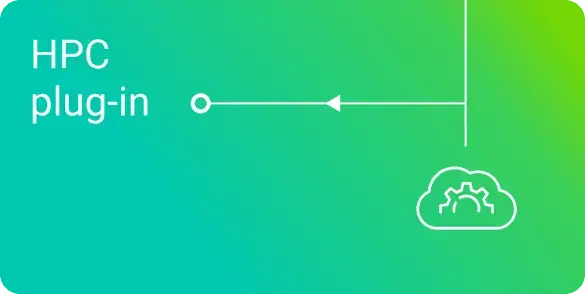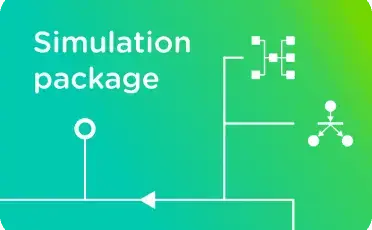GRIF | HPC plug-in -A high-performance computing extension for the MOCA-RP simulation engine
About the HPC plug-in

Boost your modeling performance
This additional plug-in provides the Petro and Petri modules from the GRIF Simulation package with high-performance computing capabilities, for use with an unlimited number of servers and processors.
The the Petro module manages complex flow propagations for large industrial systems and the the Petri module is used to search for rare events for safety reasons, so users can perform millions (or even billions) of simulations in cases where calculation time is a key factor.
This advanced technology was initially developed by TotalEnergies for its HPC Pangea II. Today, the HPC plug-in is available on the market for all economic and industrial players looking for ultra-fast, high-performance calculation engines for their reliability studies.
Benefits of the HPC plug-in
The HPC plug-in breaks down the histories/simulations of each operation into smaller calculations performed in parallel remotely via the cloud.
It features three calculation functions:
- Remote computing on a Linux server (50-200 cores) on your premises or via the cloud.
- HPC computing on your supercomputer using an LSF or PBS scheduler (unlimited number of servers).
- HPC computing using Microsoft Azure (up to 1,000 cores).

Linux versions are available for Debian/Ubuntu and RedHat/CentOS. The plug-in can be specifically tailored to your supercomputer. Please contact us if you would like to rent a server configured for HPC computing in the Cloud. We provide either a specialist Linux server for remote computing or a HPC service per minute of computation.
Licensing of several HPC plug-ins
The HPC plug-in requires a specific license that loads when you open the Petri or Petro module. If several users want to use the HPC plug-in at the same time, you will need several licenses.
Need more information ?
About the GRIF Simulation package, Petri and Petro modules

Simulation package
4 modules for modeling large complex industrial systems, with a powerful calculation engine based on Monte Carlo simulation (convergence graphs, stochastic Petri nets with predicates, stochastic block diagrams, etc.).

Petri module – Stochastic Petri Nets
Assessing dynamic system performance using Stochastic Petri nets with Predicates and Assertions

Petro Module – Multi-flows Block Diagrams
Evaluating the performance of dynamic multi-flow systems using stochastic block diagrams.
About GRIF

Identify the essential indicators of your system analysis.
GRIF (GRaphical Interface for Reliability Forecasting) is a software suite designed to help engineers determine the key RAMS (Reliability - Availability - Maintainability - Safety) indicators. Drawing on TotalEnergies' experience in simulation research and development, it features mature, high-performance calculation engines and modeling capabilities to meet all your needs in any reliability study.